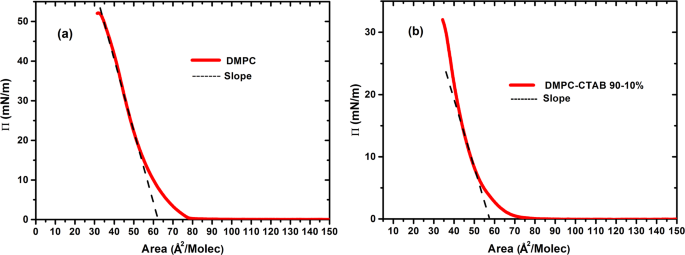Spontaneous bilayer wrapping of virus particles by a phospholipid Langmuir monolayer
Abstract
We report here the spontaneous formation of lipid-bilayer-wrapped virus particles, following the injection of “naked” virus particles into the subphase of a Langmuir trough with a liquid monolayer of lipids at its air–water interface. The virus particles are those of the well-studied cowpea chlorotic mottle virus, CCMV, which are negatively charged at the pH 6 of the subphase; the lipids are a 9:1 mix of neutral DMPC and cationic CTAB molecules. Before adding CCMV particles to the subphase we establish the mixed lipid monolayer in its liquid-expanded state at a fixed pressure (17.5 mN/m) and average area-per-molecule of (41Å2). Keeping the total area fixed, the surface pressure is observed to decrease at about 15 h after adding the virus particles in the subphase; by 37 h it has dropped to zero, corresponding to essentially all the lipid molecules having been removed from the air–water interface. By collecting particles from the subphase and measuring their sizes by atomic force microscopy, we show that the virus particles have been wrapped by lipid bilayers (or by two lipid bilayers). These results can be understood in terms of thermal fluctuations and electrostatic interactions driving the wrapping of the anionic virus particles by the cationic lipids.
Graphical Abstract
Spontaneous acquisition by a virus particle of, first, a hydrophobic lipid monolayer envelope and, then, a hydrophilic lipid bilayer envelope, as it interacts from the subphase with an oppositely charged Langmuir monolayer


 求助内容:
求助内容: 应助结果提醒方式:
应助结果提醒方式:


